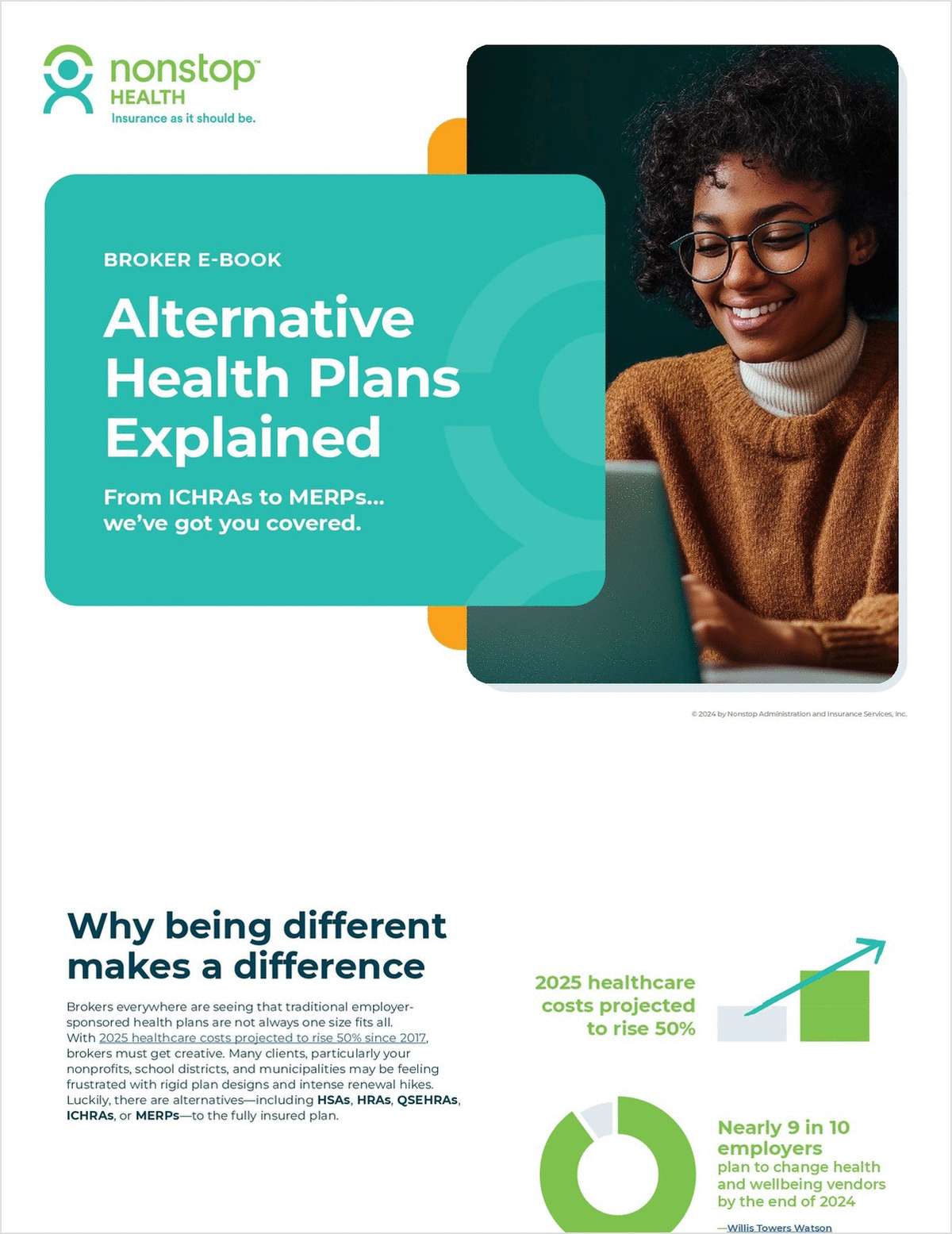(Bloomberg) -- Failing insurers. Rising premiums. Financial losses. The deteriorating Obamacare market that the health insurance industry feared is here.
As concerns about the survival of the Affordable Care Act’s markets intensify, the role of nonprofit “co-op” health insurers -- meant to broaden choices under the law -- has gained prominence. Most of the original 23 co-ops have failed, dumping more than 800,000 members back onto the ACA markets over the last two years.
Many of those thousands of people were sicker and more expensive than the remaining insurers expected -- and they’re hurting results.
With more of the nonprofits on the brink of folding, the situation for the remaining providers looks dire. Anthem Inc., for example, is facing an estimated $300 million in losses on its exchange business for individual plans this year, after turning a profit in 2014 and almost breaking even on the program in 2015, according to the company.
“These co-ops have attracted, we think, disproportionately high health-care utilizers,” Gary Taylor, an analyst with JPMorgan who follows the industry, said in a telephone interview. Their former members “are now enrolled in these for-profit health plans. That’s been a factor driving the deterioration in their profitability.”
|‘Death spiral’
Large insurers including Aetna Inc. and UnitedHealth Group Inc. have already pulled back from Obamacare’s markets, citing losses. Anthem has said it remains committed to the program.
“Are we in an Obamacare ‘death spiral?’” health insurance consultant Robert Laszewski asked in a Sept. 9 bulletin to clients, where he described the grim scenario. In a death spiral, as options for coverage shrink, insurers attract increasingly sick patients and suffer losses. That forces them to raise rates, driving away healthy, profitable customers. Facing more losses, they raise rates again, causing more healthy people to leave, and so on -- until all that’s left are high premiums and a small pool of the unwell.
People getting insurance in the ACA markets still have access to affordable plans, said Aaron Albright, a spokesman for the Centers for Medicare and Medicaid Services, which oversees the health-care program.
“America is on stronger footing today because of the Affordable Care Act with 20 million gaining health coverage and the uninsured rate is at the lowest point on record,” he said in an e-mail. “Consumers are satisfied with their coverage, have better access to care, and greater financial security -- core metrics of success.”
|Disproportionate share
Some insurers may already be feeling the burden of increasingly sick patients. Anthem’s then-Chief Financial Officer Wayne DeVeydt said in April the company was “disproportionately picking up market share” in states where co-ops had folded. On a July conference call, Chief Executive Officer Joseph Swedish said that as the insurer had brought in new membership, its costs of caring for patients with heart disease, diabetes and especially dialysis had increased. Jill Becher, an Anthem spokeswoman, said the CEO’s comments referred to the company’s overall ACA membership.
The company expects to break even on its ACA business next year and return it to profitability in 2018, Swedish said last week at a conference in New York. Still, some analysts aren’t convinced. David Windley, an analyst at Jefferies LLC, cut his rating on Sept. 13 to “hold” from “buy,” citing in part Anthem’s “potential to inherit sick members from peers exiting exchanges.”
Aetna and Humana Inc. are each on track to lose at least $300 million on Obamacare this year and have joined rivals in leaving many areas where they sell ACA plans. The broad retreat of payers -- including co-ops -- “is one of the contributing factors to our inability to responsibly maintain our current footprint,” T.J. Crawford, an Aetna spokesman, said by phone.
Many miscalculations
Representatives of Humana didn’t respond to calls seeking comment. Tyler Mason, a spokesman for UnitedHealth, declined to comment. Both insurers sold Obamacare coverage in states where co-ops have closed, according to data compiled by Bloomberg Intelligence analyst Jason McGorman.
The demise of 17 of the 23 original co-ops came after many miscalculations. The nonprofits priced plans lower than private insurers in many states, attracting large memberships that exceeded enrollment projections by as much as three times, according to Scott Harrington, a professor of insurance and risk management at the University of Pennsylvania’s Wharton School.
As enrollments rose, so did costs. In states like Kentucky, Nevada and South Carolina, co-ops struggled with members who had never before had coverage and required more treatments, former executives said.
South Carolina’s co-op patients “skewed older and had higher medical needs,” said Jerry Burgess, who was chief executive of the now-defunct Consumers’ Choice Health Insurance Co., in a telephone interview. “If we took in a dollar on premiums, we were spending a dollar on medical expense. You can’t sustain that, you’re in a loss position.”
Co-ops were also hurt by an ACA program intended to transfer funds from insurers with healthier customers to those with sick ones, called “risk adjustment.” The program considered many of the co-ops’ members to be healthier than those with other insurers, though the co-ops say that’s not the case.
Because of risk adjustment, the co-ops were sometimes required to pay hefty sums to larger rivals. Some have sued federal officials over the program, seeking to avoid making the payments. While Albright, the CMS spokesman, declined to comment on the lawsuits, the agency has proposed implementing some of the insurers’ suggested changes.
It’s not clear whether the remaining co-ops can survive without additional funding, said Deep Banerjee, an analyst with S&P Global. The nonprofit in New Jersey won’t sell policies next year, while Maine-based Community Health Options is pulling out of New Hampshire.
|More exits
The co-op exits this year mean that at least 60,000 people will have to pick new plans for 2017, according to data compiled by Bloomberg. If all the remaining co-ops were to fail, it could strand another 240,000 members, the data show. If that happens, Anthem may shoulder even more of the burden, Goldman Sachs’s Matthew Borsch said Aug. 23 in a note to clients.
Given its large presence on the exchanges, Anthem might be “left with a more risk-imbalanced exchange population following exits by the other public companies, and most of the remaining not-for-profit ACA co-op plans,” Borsch said.
Copyright 2018 Bloomberg. All rights reserved. This material may not be published, broadcast, rewritten, or redistributed.
Complete your profile to continue reading and get FREE access to BenefitsPRO, part of your ALM digital membership.
Your access to unlimited BenefitsPRO content isn’t changing.
Once you are an ALM digital member, you’ll receive:
- Breaking benefits news and analysis, on-site and via our newsletters and custom alerts
- Educational webcasts, white papers, and ebooks from industry thought leaders
- Critical converage of the property casualty insurance and financial advisory markets on our other ALM sites, PropertyCasualty360 and ThinkAdvisor
Already have an account? Sign In Now
© 2024 ALM Global, LLC, All Rights Reserved. Request academic re-use from www.copyright.com. All other uses, submit a request to [email protected]. For more information visit Asset & Logo Licensing.








